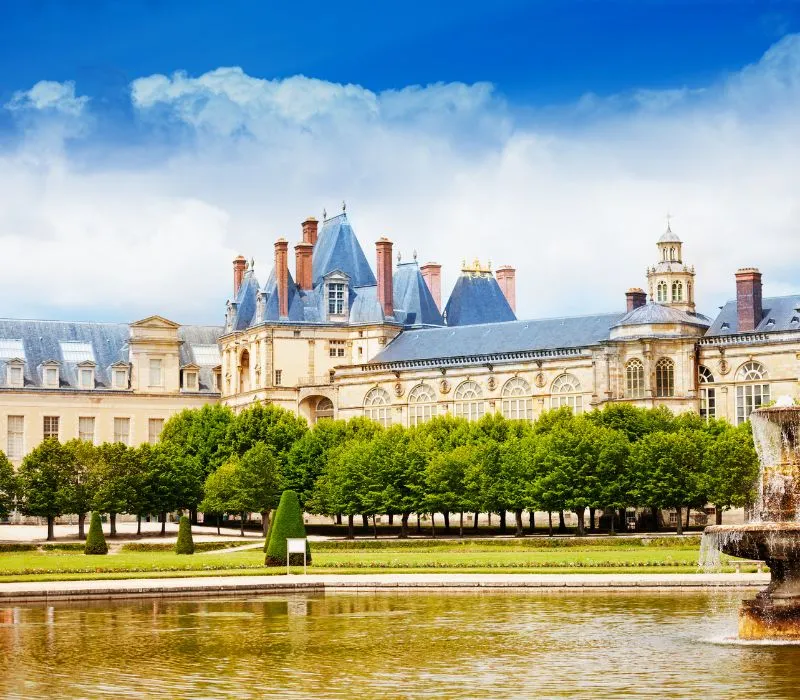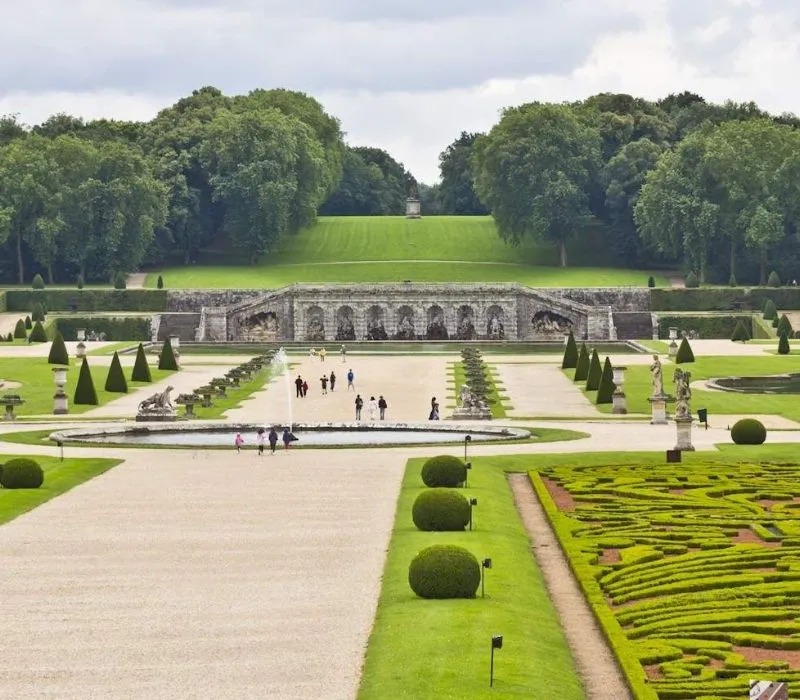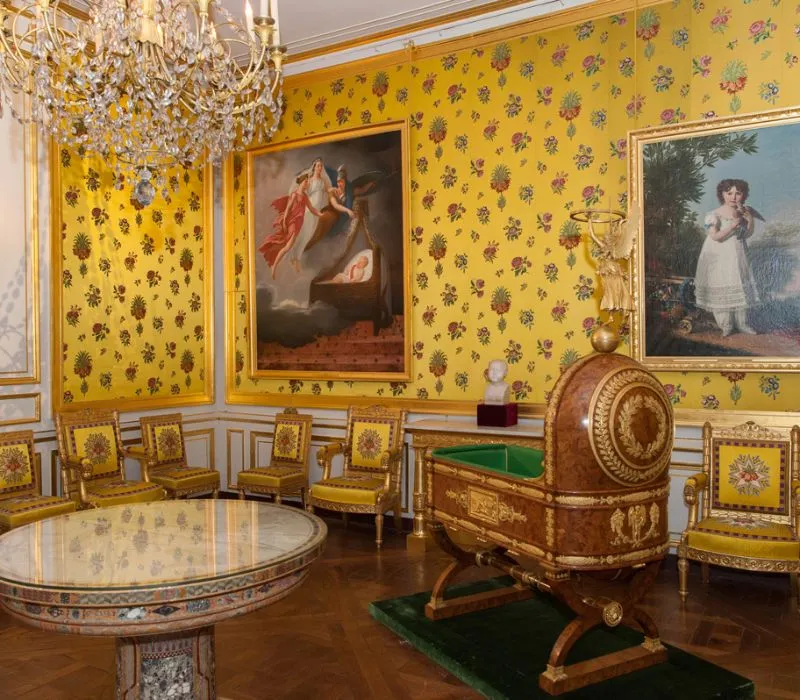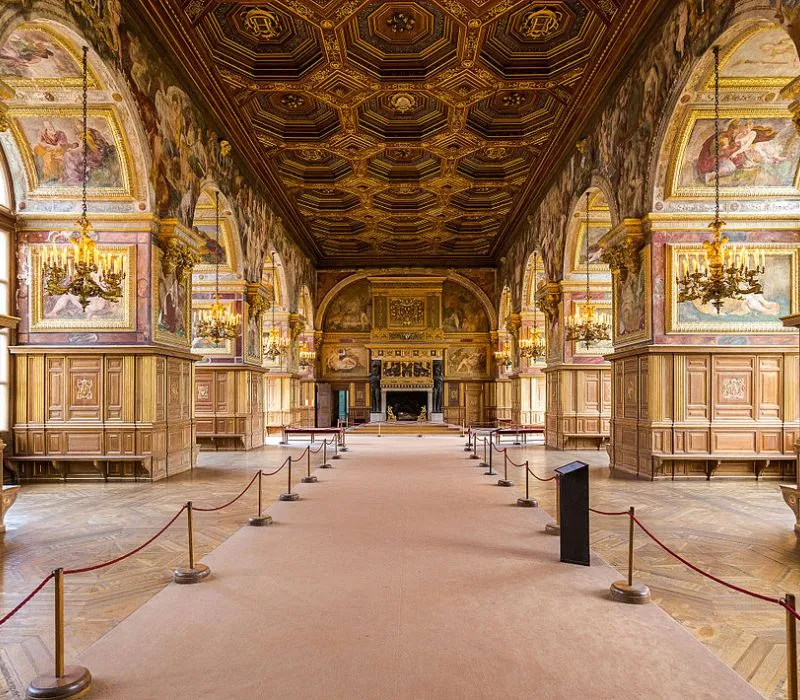Fontainebleau, the jewel of France, is not just a magnificent royal castle with a history spanning nearly 900 years but also an architectural ensemble intertwined with nature, especially its beautiful royal gardens. If you are planning to explore these lush, artistic spaces, let’s unveil the secrets to ensure a truly memorable journey.
Discover the Timeless Beauty of France’s Royal Gardens
Fontainebleau, located about 60km southeast of Paris, is renowned not only for its magnificent castle architecture, once the residence of 34 kings and 2 emperors, but also for captivating visitors with its splendid royal gardens. Each garden has a unique design style, reflecting the aesthetic tastes and historical imprints of different eras.

Fontainebleau, constructed in 1137, has witnessed numerous changes and expansions, particularly under King Francis I, who transformed it into a Renaissance architectural masterpiece. The gardens at Fontainebleau are not merely green spaces; they are an integral part of French history and culture, where visitors can find peace and admire true artistic beauty.
Journey to Fontainebleau: Choosing Your Mode of Transport
To reach Fontainebleau from Paris, you can choose from the following options:
Train and Bus: This is the most popular and cost-effective choice. From Gare de Lyon, take the RER R train to Fontainebleau-Avon station (approximately 40 minutes). Then, catch bus number 1 right in front of the station and disembark at “Fontainebleau Bibliothèque,” just a few minutes’ walk from the castle. A day Mobilis pass is an ideal choice for convenient travel.
Bicycle: If you enjoy exploration and nature, cycling from Paris to Fontainebleau is an exciting experience. You can rent a bike and follow dedicated bike paths, passing through peaceful countryside and lush forests. This journey takes around 3-4 hours.
Taxi or Private Car: For comfort and privacy, a taxi or private car service is suitable. However, costs will be higher than public transportation. Travel time by taxi is about one hour.
Tips for Buying Tickets and Planning Your Visit
To avoid queues and save time, purchase your admission tickets online from the official Château de Fontainebleau website or via reputable platforms like GetYourGuide. Adult tickets cost around €13, while children under 18 enter for free. Notably, on the first Sunday of the month (excluding July and August), you can visit the castle free of charge.
The castle is open daily except Tuesdays and holidays like January 1, May 1, and December 25.
Must-See Majestic Royal Gardens
Fontainebleau boasts numerous beautiful gardens, each offering unique styles and beauty:
Grand Parterre
This is the largest garden within Fontainebleau, designed with classic French geometric flower beds, water features, and fountains. The Grand Parterre symbolizes the wealth and power of the French monarchy.

Garden of Diana
The Garden of Diana exudes romantic English style with winding paths, lush green lawns, and towering trees. It’s a perfect spot for a leisurely stroll and enjoying the fresh air.
English Garden
The English Garden is a small, tranquil area designed in a natural style with native plants and hidden paths. Here, you can find peace and relaxation.
Park Surrounding the Grand Canal
The park surrounding the Grand Canal is a vast space with lawns, forests, and lakes. You can rent boats to explore the Grand Canal or have a picnic on the grass.
How Much Time to Fully Enjoy Fontainebleau?
To have a memorable experience at Fontainebleau, allocate at least 5-7 hours to explore the castle and gardens. Spend 2-3 hours touring the interior rooms, then relax and snack by the pond. The remaining time can be dedicated to walking through the gardens and admiring the beauty of nature.
Must-Visit Attractions Inside the Castle
Besides the gardens, Fontainebleau offers many other fascinating attractions inside the castle:
Napoleon I Museum
The Napoleon I Museum displays artifacts related to Emperor Napoleon Bonaparte’s life and career, including porcelain, furniture, and family portraits.

Francis I Gallery
The Francis I Gallery is a masterpiece of French Renaissance art, featuring intricate decorations and exquisite artworks.
Ballroom
The ballroom is one of the castle’s most splendid spaces, hosting royal lavish balls.

Trinity Royal Chapel
The Trinity Royal Chapel embodies refined baroque architecture and hosts royal religious ceremonies.
Napoleon’s Throne Room
The Throne Room is the only place in France still retaining an intact throne room within a palace.
Royal Library
The Royal Library is a beautiful space with over 20,000 rare books.
Conclusion
Visiting Fontainebleau is an exploration of French history, culture, and art. With detailed guidance above, we hope you have a wonderful and memorable experience at this jewel. Immerse yourself in the beauty of the royal gardens, marvel at the castle’s splendid architecture, and discover intriguing historical stories. Fontainebleau will surely be a destination that does not disappoint.